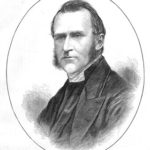Anglicanism’s theological roots (those of the established Church of England) were grounded in Roman Catholic ideology in its initial stage. Roman Catholic site New Advent states: “Before the breach with Rome under Henry VIII there was absolutely no doctrinal difference between the faith of Englishmen and the rest of Catholic Christendom, and ‘Anglicanism’, as connoting a separate or independent religious system, was unknown.”
When Pope Clement VII. (dependent upon the Holy Roman Emperor, Charles V., Catherine of Aragon’s nephew) refused to grant Henry a divorce from his wife Catherine of Aragon, who had failed to produce Henry with a male heir1 (to say nothing of Henry’s own obsession with and desire to marry Anne Boleyn), he sanctioned The Act of Royal Supremacy in 1534 (which was revived by Elizabeth I., as well as successive English reigns until 1833). By this act, Henry situated himself as Head of the Church of England.
The Thirty-Nine Articles, written and enacted in 1563 (the thirty-ninth Article added in 1571), were required of all bishops and clergy. During Elizabeth’s reign, the tone of Anglicanism may have appeared mildly Calvinistic, but nothing resembling what was witnessed during Arminius’ locale, with the likes of supralapsarian Francis Gomarus.
For example, Article XVII states: “Predestination to Life is the everlasting purpose of God, whereby (before the foundations of the world were laid) he hath constantly decreed by his counsel secret to us, to deliver from curse and damnation those whom he hath chosen in Christ out of mankind, and to bring them by Christ to everlasting salvation, as vessels made to honour.” (Notice the statement regarding predestination lacks unconditionality.) Though these Articles would not be amended, Calvinism would later be abandoned by most Anglicans, as will be demonstrated below.
The English Reformation, promoted by the likes of Cranmer, Hooper, Cox and Coverdale, was substantially affected by Protestant reformers Luther, Zwingli, Calvin and Bucer. Arminius’ influence in England cannot be overstated, however. Though even some Wesleyan ministers today, zealous for the life and thought of John and Charles Wesley, have never heard of nor read Arminius, this fact still attests to the triumph of Arminianism. Geoffrey F. Nuttall, in his article “The Influence of Arminianism in England” writes:
In part, no doubt, this reflects the contented ignorance of theology common among Englishmen, but to a shrewd observer it may suggest the genuine triumph of Arminianism. In the last decades there has been a revival of Calvinism in Europe, but a revival of Arminianism is difficult to imagine. “Since Wesley, we are all Arminians” whether we know it or not, whether we have ever heard of Arminius or not. Arminius has triumphed much as, in a far shorter time, Sigmund Freud has triumphed; all of us think differently because of Freud, even those who have never heard of him.2
No doubt, theologically speaking, without Arminius there would not have been the Wesleys, much like without St Augustine there would not have been Calvin. But Arminius’ triumph among Anglican churches in theology was achieved in part by the legalism and opposition of Puritans in England. Under Edward VI.’s reign (1547-1553), Henry VIII.’s sickly son and successor, liturgical changes were introduced into the Church’s practice regarding the Eucharist (thanks in no small part to Archbishop Cranmer), as well as a new prayer book called the Book of Common Prayer.
His successor, Mary, also known as “Bloody Mary,” intended to restore England to her Roman Catholic faith. Her attempt aroused much opposition and ultimately failed. Upon her death in 1558, Mary’s half-sister Elizabeth I., daughter of Henry VIII. and Anne Boleyn, reigned as queen (1558-1603). Under her reign (known as England’s Golden Age), Protestantism (and a mild, nearly benign form of Calvinism) flourished.
Elizabeth I.’s successor, James VI., King of Scots, became James I., King of England (1603-1625). He ruled both kingdoms until his death. John R. Tyson notes: “The Anglican establishment, under the leadership of James I, began to veer away from the strict Calvinism of the sixteenth-century Reformation.”3 The theological readjustment was due in part to a reaction from Archbishop and Arminian defender William Laud (1573-1645) to the Puritans. Tyson explains:
After the fall of the Puritan government, the Anglican establishment worked out its revenge against them by repressing the Puritans and their theology. The thoroughgoing Calvinism of the Puritans was moderated and persecuted during the Restoration era. By the time of John and Charles Wesley [1703-1791, John outlived his brother Charles], many Anglicans were not strict Calvinists, and most “Dissenters” who stood outside the Church of England were.
Charles Wesley seems to have come by his Arminian perspective on salvation through the Anglican tradition and his own forays into the Scriptures, as well as his parents’ influence. The same could be said of John Wesley, but Charles also had his elder brother Samuel’s influence, and he too was a staunch Anglican and Arminian. When John was preparing to receive “holy orders” in the Church of England, his father recommended that he study the Dutch Arminian Hugo Grotius’s commentary on the Old Testament.4
Arminius’ doctrinal influence on the Church of England is also verified by the Rev. Tobias Conyers (1628-1687), who writes: “It is well known, my Lord, what countenance the scriptures carry with the doctrine of GENERAL ATONEMENT, and how much it looks like the doctrine of the Church of England(so we call it), and that the major part of the Bishops and Doctors, during the Episcopal Hierarchy, were deeply baptized thereinto, and the late king [Charles the First] himself. …”5 The author of the footnote here informs the reader that this is “a very important testimony in favour of the genuine Arminian complexion of the doctrine of the Church of England.”6
Even more telling with reference to Arminius’ influence on the Church of England is a commentary from the Rev. John Fletcher (and its attached footnote), regarding the era of the Synod of Dordt — thereafter Arminian ministers were exiled from Holland for opposing Calvinism’s errors. Fletcher writes: “Archbishop Laud, in the days of King James and Charles the first, caused in the gospel-scales the turn, which then began to take place in our church in favour of the doctrines of justice. He was the chief instrument [Laud], which, like Moses’s rod, began to part the boisterous sea ofrigid Calvinism. He received his light from Arminius. …”7
Regarding the “doctrines of justice,” mentioned above, the footnote, written by “Jortin’s Disser,” informs the reader:
In England, at the time of the Synod of Dort, we also were much divided in our opinions concerning the controverted articles [the Five Articles of Remonstrance]; but our divines having taken the liberty to think and judge for themselves, and the civil government not interposing, it hath come to pass that, from that time to this, almost all persons here of any note for learning and abilities have bid adieu to Calvinism, have sided with the Remonstrants [the followers and successors of Arminius], and have left the Fatalists to follow their own opinions, and to rejoice (since they can rejoice) in a religious system, consisting of human creatures without liberty, doctrines without sense, faith without reason, and a God without mercy.8
The triumph of Arminius in the Church of England and in Anglican theology would, due to neglect and apathy, give way to Liberalism and Unitarianism, much as did Presbyterian churches in England (and America) during the eighteenth century.9 May the faithful within her ranks arise with the love, strength and boldness of the Spirit of Almighty God through Christ Jesus our King.
__________
1 Jackson J. Spielvogel, Western Civilization: Brief Discovery Edition, third edition (Belmont: Thomson Wadsworth, 2006), 240.
2 Geoffrey F. Nuttall, “The Influence of Arminianism in England,” Man’s Faith and Freedom: The Theological Influence of Jacobus Arminius, ed. Gerald O. McCulloh (Eugene, OR: Wipf & Stock Publishers, 1962), 46-47.
3 John R. Tyson, Assist Me to Proclaim: The Life and Hymns of Charles Wesley (Grand Rapids: Wm. B. Eerdmans Publishing Co., 2007), 99.
4 Ibid., 99-100.
5 The Works of Arminius, three volumes, “Testimonies from Various Authors,” trans. James and William Nichols (Grand Rapids: Baker Book House, 1996), 1:xli.
6 Ibid.
7 Ibid., xlix.
8 Ibid.
9 Laurence M. Vance, The Other Side of Calvinism (Pensacola: Vance Publications, 2002), 139. See also J. L. Neve, A History of Christian Thought, three volumes (Philadelphia: The United Lutheran Publication House, 1943), 2:31.





